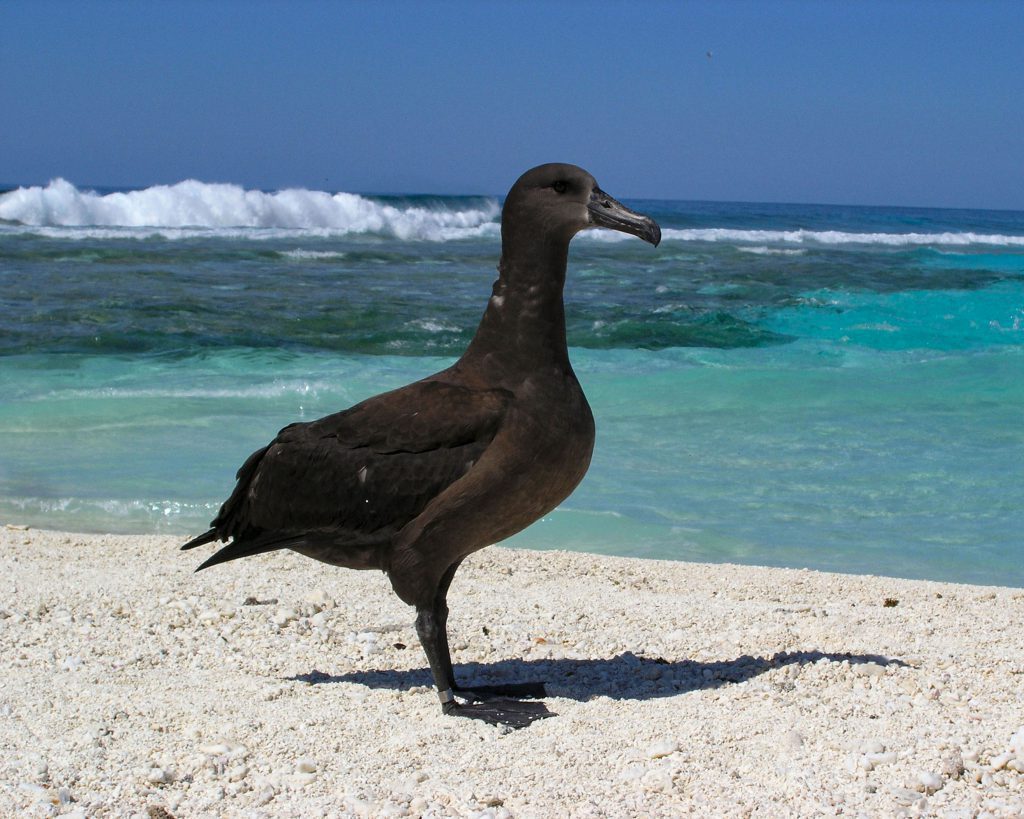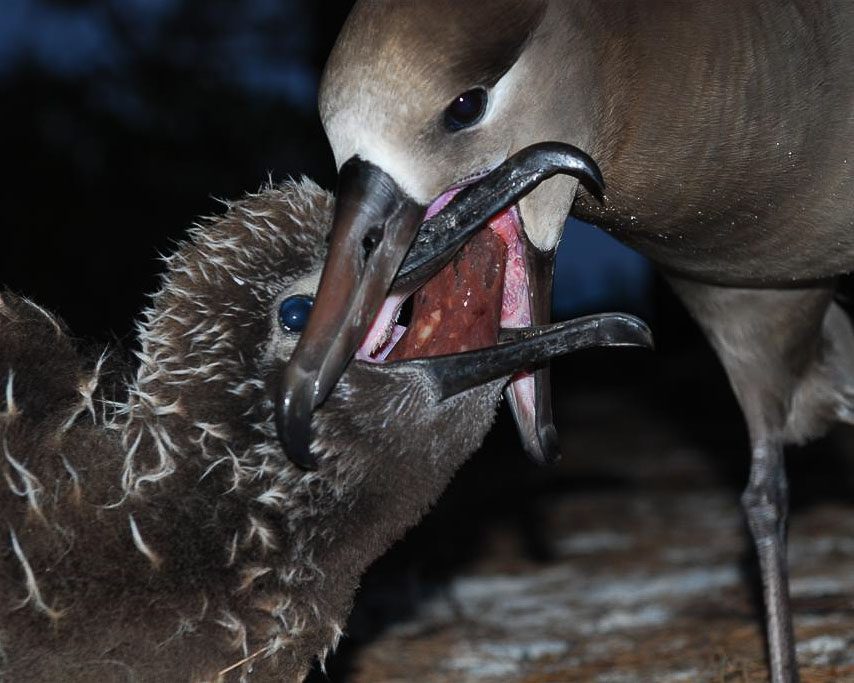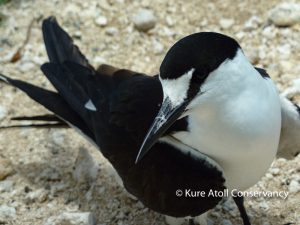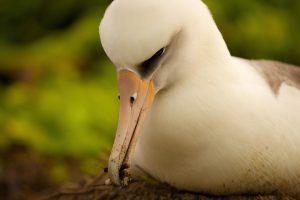Ka‘upu (black-footed albatross) feed on the surface by seizing prey while sitting on the water, and will “tip-up” very similar to ducks. Like many seabirds, uses a well-developed olfactory sense to locate food.
Ka‘upu (black-footed albatross) form long-term pair bonds and exhibit a high degree of nest site philopatry. Breeding occurs in large colonies and nests are placed on open, sandy beaches or dunes. Pairs engage in noisy, ritualized courtship dances. Pairs remain together until the death or disappearance of a partner but do not breed every year. Ka‘upu (black-footed albatross) nest in scooped out hollows on the upper parts of sandy beaches. In Hawai‘i, eggs are laid in November and chicks fledge in June and July, and like many seabirds, only one egg is laid per year. Both male and female incubate egg, and brood and feed young. Young birds do not return to land until their third year after fledging. These birds do not breed, but dance, build nests, and prospect for mates. Age at first breeding is at least 5 years old, and the oldest-known black-footed albatross is at least 43 years old.




















